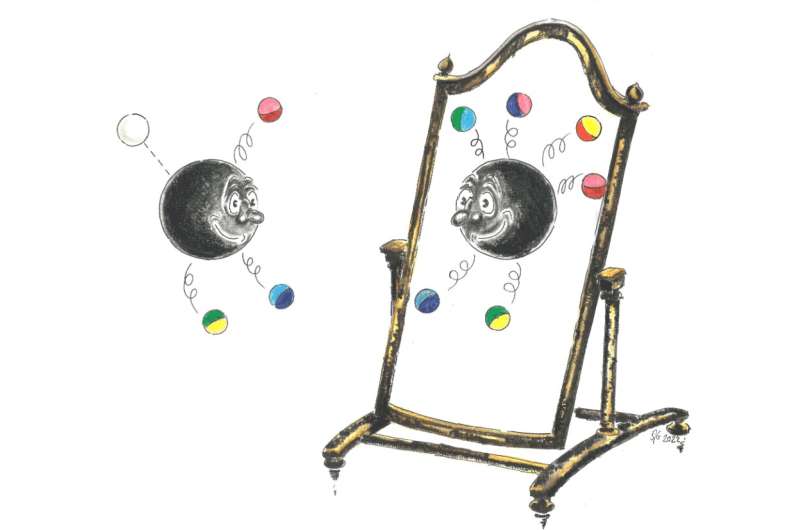New and surprising duality found in theoretical particle physics

A new and surprising duality has been discovered in theoretical particle physics. The duality exists between two types of scattering processes that can occur in the proton collisions made in the Large Hadron Collider at CERN in Switzerland and France. The fact that this connection can, surprisingly, be made points to the fact that there is something in the intricate details of the standard model of particle physics that is not fully understood. The standard model is the model of the world on sub-atomic scale that explains all particles and their interactions, so when surprises appear, there is cause for attention. The scientific article is now published in Physical Review Letters.
Duality in physics
The concept of duality occurs in different areas of physics. The most well known duality is probably the particle-wave duality in quantum mechanics. The famous double-slit experiment shows that light behaves like a wave, while Albert Einstein received his Nobel prize for showing that light behaves like a particle.
The strange thing is that light is actually both and neither of the two at the same time. There are simply two ways we can look at this entity, light, and each comes with a mathematical description. Both with a completely different intuitive idea, but still describe the same thing.
"What we have now found is a similar duality," Matthias Wilhelm, assistant professor at the Niels Bohr International Academy, explains. "We calculated the prediction for one scattering process and for another scattering process.
Our current calculations are less experimentally tangible than the famous double slit experiment, but there is a clear mathematical map between the two, and it shows that they both contain the same information. They are linked, somehow."
Theory and experiments go hand in hand
The Large Hadron Collider collides a lot of protons—in these protons, there are a lot of smaller particles, the subatomic particles gluons and quarks.
In the collision, two gluons from different protons can interact and new particles are created, such as the Higgs particle, resulting in intricate patterns in the detectors.
Researchers map how these patterns look, and the theoretical work done in relation to the experiments aims to describe precisely what goes on in mathematical terms, in order to create an overall formulation, as well as to make predictions that can be compared to the results of the experiments.
"We calculated the scattering process for two gluons interacting to produce four gluons, as well as the scattering process for two gluons interacting to produce a gluon and a Higgs particle, both in a slightly simplified version of the standard model. To our surprise, we found that the results of these two calculations are related. A classical case of duality. Somehow, the answer for how likely it is for one scattering process to happen carries within it the answer for how likely it is for the other scattering process to happen. The strange thing about this duality is that we don't know why this relation between the two different scattering processes exists. We are mixing two very different physical properties of the two predictions, and we see the relation, but it is still a bit of a mystery wherein the connection lies," Matthias Wilhelm says.
The duality principle and its application
According to current understanding, the two should not be connected—but with the discovery of this surprising duality, the only proper way to react to it is to investigate further.
Surprises always signify that there is something we now know that we don't understand. After the discovery of the Higgs particle in 2012, no new, sensational particles have been discovered. The way we hope to detect new physics now is by making very precise predictions on what we expect to happen, then compare them with very precise measurements on what nature shows us, and see if we can find deviations there.
We need a lot of accuracy, both experimentally and theoretically. But with more precision comes harder calculations. "So where this could be leading is working in order to see if this duality can be used to get a sort of "mileage" out of it, because one calculation is simpler than the other—but still it gives the answer to the more complicated calculation," Matthias Wilhelm explains.
"So if we can settle for using the simple calculation we may use the duality to answer the question that would otherwise require more complicated calculations—But then we really need to understand the duality. It is important to note, though, that we are not there yet. But usually, the questions that arise from unexpected behavior of things are a lot more interesting than an orderly and expected outcome."
More information: Lance J. Dixon et al, Folding Amplitudes into Form Factors: An Antipodal Duality, Physical Review Letters (2022). DOI: 10.1103/PhysRevLett.128.111602
Journal information: Physical Review Letters
Provided by Niels Bohr Institute




















